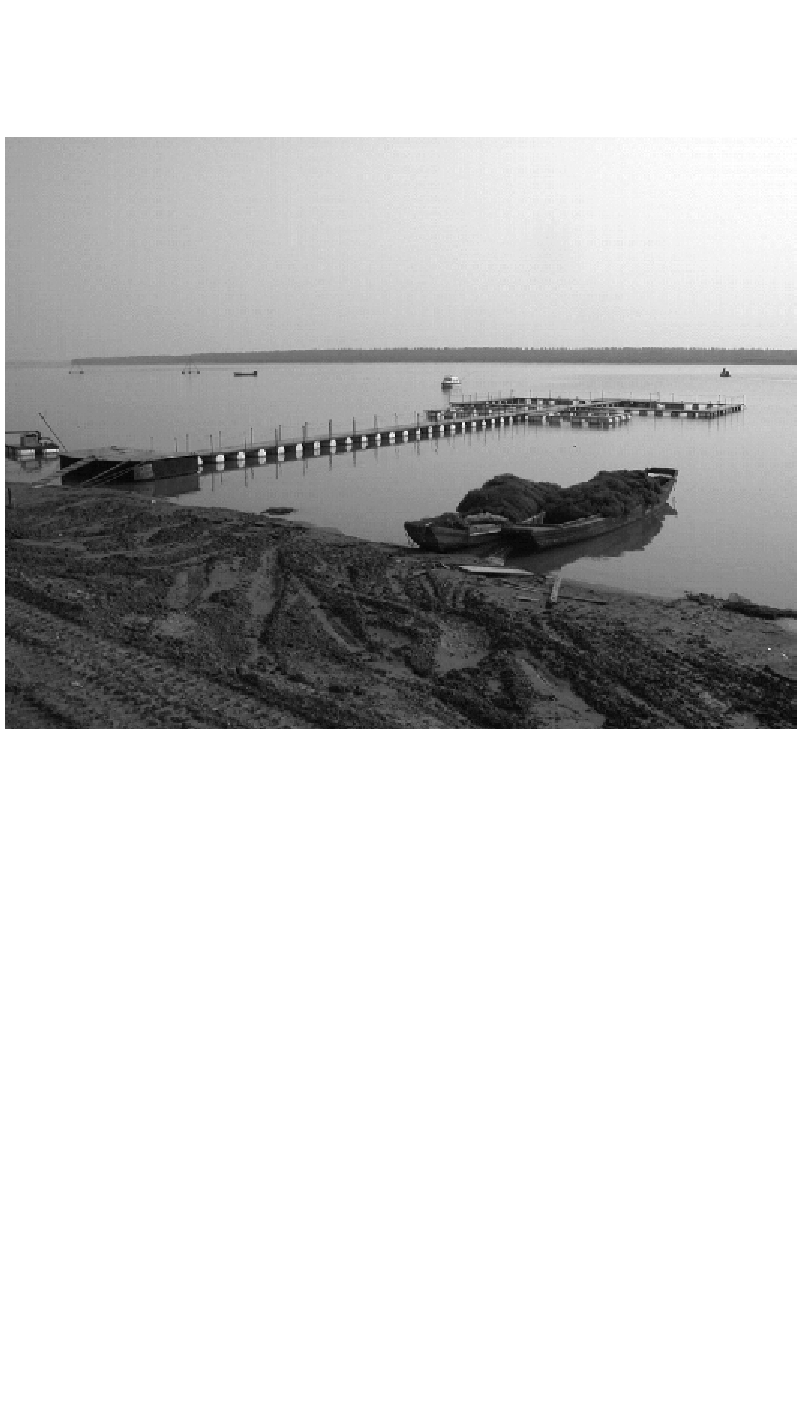Biology Reference
In-Depth Information
2008). A new initiative to generate momentum and increased international support for a more
carefully managed semi-natural recovery program at Tian'e-Zhou from 2004 onwards,
involving development of a detailed budget and implementation plan and extensive fund-
raising efforts, ultimately proved unsuccessful (Turvey et al., 2006; Turvey, 2008).
Figure 5. Incomplete cetacean holding pens at Tian'e-Zhou. Construction on these holding pens finally
commenced shortly before the November-December 2006 survey that documented the probable
extinction of the baiji, even though they had been repeatedly recommended at international workshops
as an essential infrastructural improvement needed for the baiji recovery program. Note also the
extensive amount of fishing gear in the two boats in the foreground. Photograph by the author.
Would it have been Possible to Save the Baiji?
The extensive range of
in situ
and
ex situ
conservation approaches outlined above was
deliberated by both Chinese and international researchers for three decades. Substantial
conservation recommendations for the baiji were developed during this period, notably in
four major baiji-focused workshop reports (Perrin et al., 1989; Zhou et al., 1994; Ministry of
Agriculture, 2001; Braulik et al., 2005), two further IUCN Species Survival Commission
documents (Reeves et al., 2000, 2003), at considerable further small-scale or more general
workshops and meetings (e.g. Reeves & Leatherwood, 1995; Turvey et al., 2006), and in
numerous scientific publications (e.g. Zhang et al., 1995; Smith & Smith, 1998; Dudgeon,
2005). However, all of these efforts still failed to prevent the probable extinction of the baiji
by the first decade of the twenty-first century. Indeed, progressive international meeting

Search WWH ::

Custom Search